Lunar eclipse: Century's longest 'blood moon' delights skygazers
- Published
The century's longest 'blood moon', or lunar eclipse, delighted many, if not all, skygazers
Skywatchers around the world have witnessed the longest "blood moon" eclipse of the 21st Century.
As it rose, during this total eclipse, Earth's natural satellite turned a striking shade of red or ruddy brown.
The "totality" period, where light from the Moon was totally obscured, lasted for one hour, 43 minutes.
At least part of the eclipse was visible from Europe, the Middle East, Africa, Australia, most of Asia and South America.

The blood moon as seen in the Swiss Alps...
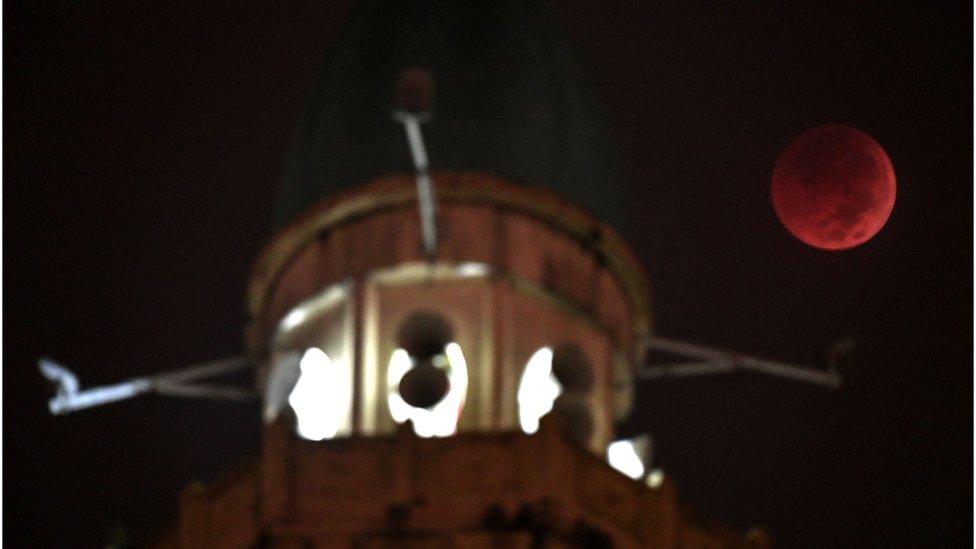
... and in Kuala Lumpur
In the UK, where the weather allowed, the Moon could be seen to turn red - fully eclipsed by Earth - from when it rose at 21:00 until 22:15 BST.
Over the coming days, Mars will be at its closest point to Earth since 2003 - visible as a "bright red star" where skies are clear.
Why did the eclipse last so long?
The Moon passed right through the centre of the Earth's shadow, at the shadow's widest point.
Science behind the blood moon
"This is actually almost as long as a lunar eclipse could be," Prof Tim O'Brien, an astrophysicist at University of Manchester, explained.
It coincided not only with Mars's close approach, but with what he described as a "procession of planets" - a line-up of our celestial neighbours that gave skywatchers a particularly good view of Venus, Jupiter, Saturn and Mars.
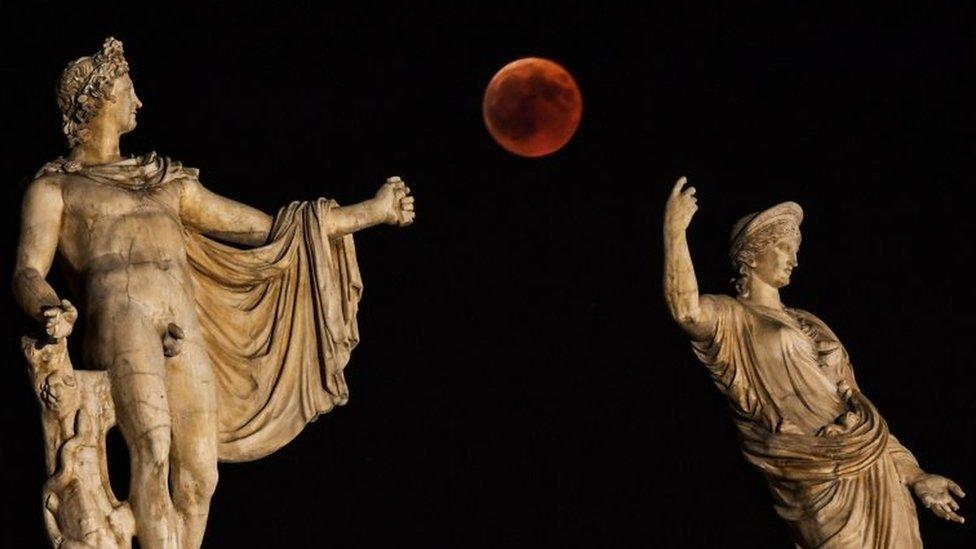
The blood moon beside a statue of ancient Greek goddess Hera and god Apollo in Athens
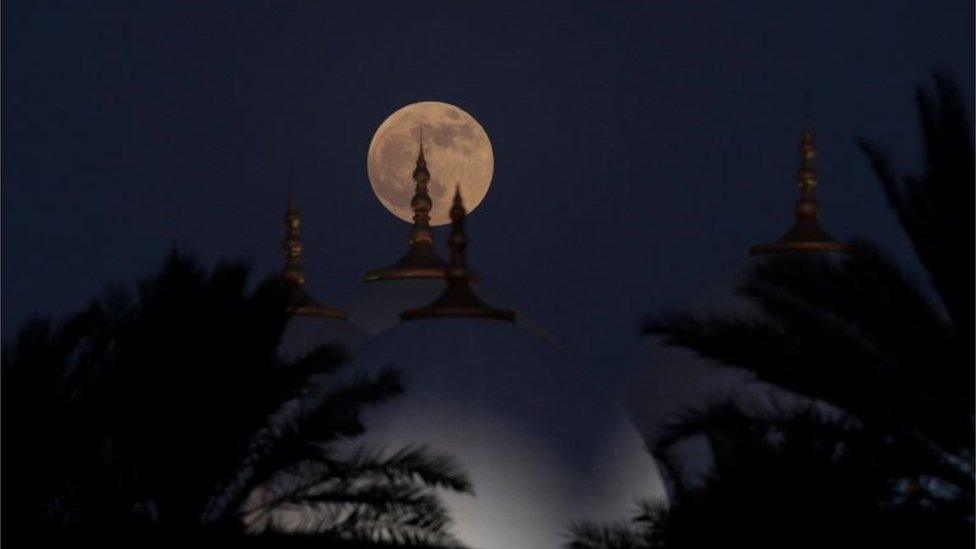
The blood moon rises behind the Sheikh Zayed Grand Mosque in Abu Dhabi

Eclipse terms
Umbra: The darker, central part of the Earth's shadow
Penumbra: The lighter, outer part of the shadow cast by our planet

Because the Moon is far away from Earth relatively speaking - its orbit is an ellipse, so it moves closer and further and looks larger and smaller from Earth.
Mars could also be seen as a bright red star just below the Moon.

Mars (bottom right) could also be viewed in the sky
"Every couple of years or so, the Earth overtakes Mars on the inside as it orbits the Sun, so Mars is closest to us," said Prof O'Brien.
"And because of the elliptical shape of the orbit, it's even closer than normal."
Where was the eclipse visible?
Where skies were free of cloud, the spectacle was visible almost everywhere around the world, with the exception of North America. The eclipse had already started by the time the Moon rose over the UK and Western Europe.
People in the UK needed a clear south-eastern horizon as the Moon came up in order to see it.

The blood moon over Sydney, Australia
The best views - where the weather permitted - were across Eastern Europe, Central and East Africa and South East Asia, from where the entire eclipse was visible.
So, from the UK and Europe, the south-east was the place to look for the rising, eclipsing Moon with a bright red Mars below. Jupiter could also be seen in the southern sky and Venus in the west.
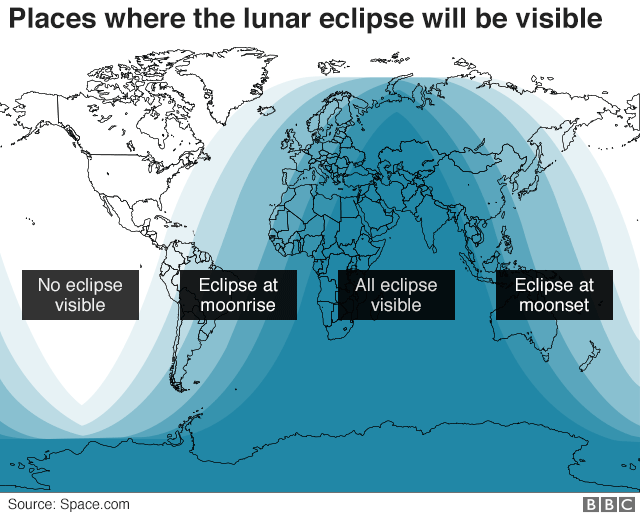
Dr Emily Brunsden, director of the University of York's Astrocampus, added that this eclipse was a "micro blood moon".
"This is a total eclipse at a time in its orbit when it is close to being the farthest from Earth, or at apogee," she said.
"Hence the Moon was fractionally smaller than usual."

Stages of a total lunar eclipse
Penumbral eclipse begins: This starts when the outer (and lighter) part of the Earth's shadow begins moving across the Moon
Partial eclipse begins: This stage takes hold when the darker, inner part of the Earth's shadow (umbra) begins covering the Moon
Total eclipse begins: Also called totality, this occurs when the umbra completely covers the Moon, turning it a reddish brown colour
Maximum eclipse: The mid-point of totality
Total eclipse ends: The umbra starts moving away from the Moon's face after totality
Partial eclipse ends: Earth's umbra completely leaves the surface of the Moon
Penumbral eclipse ends: The outer part of the shadow (penumbra) completely moves away from the Moon
Source: timeanddate.com

Did you see the "blood moon"? Send pictures or video to yourpics@bbc.co.uk, external
Please include your name and location when sending your pictures. Please include a contact number if you are willing to speak to a BBC journalist. You can also contribute your images in the following ways:
WhatsApp: +44 7555 173285
Tweet: @BBC_HaveYourSay, external
Send an SMS or MMS to 61124 (UK) or +44 7624 800 100 (international)
Please read our terms & conditions and privacy policy
- Published31 January 2018
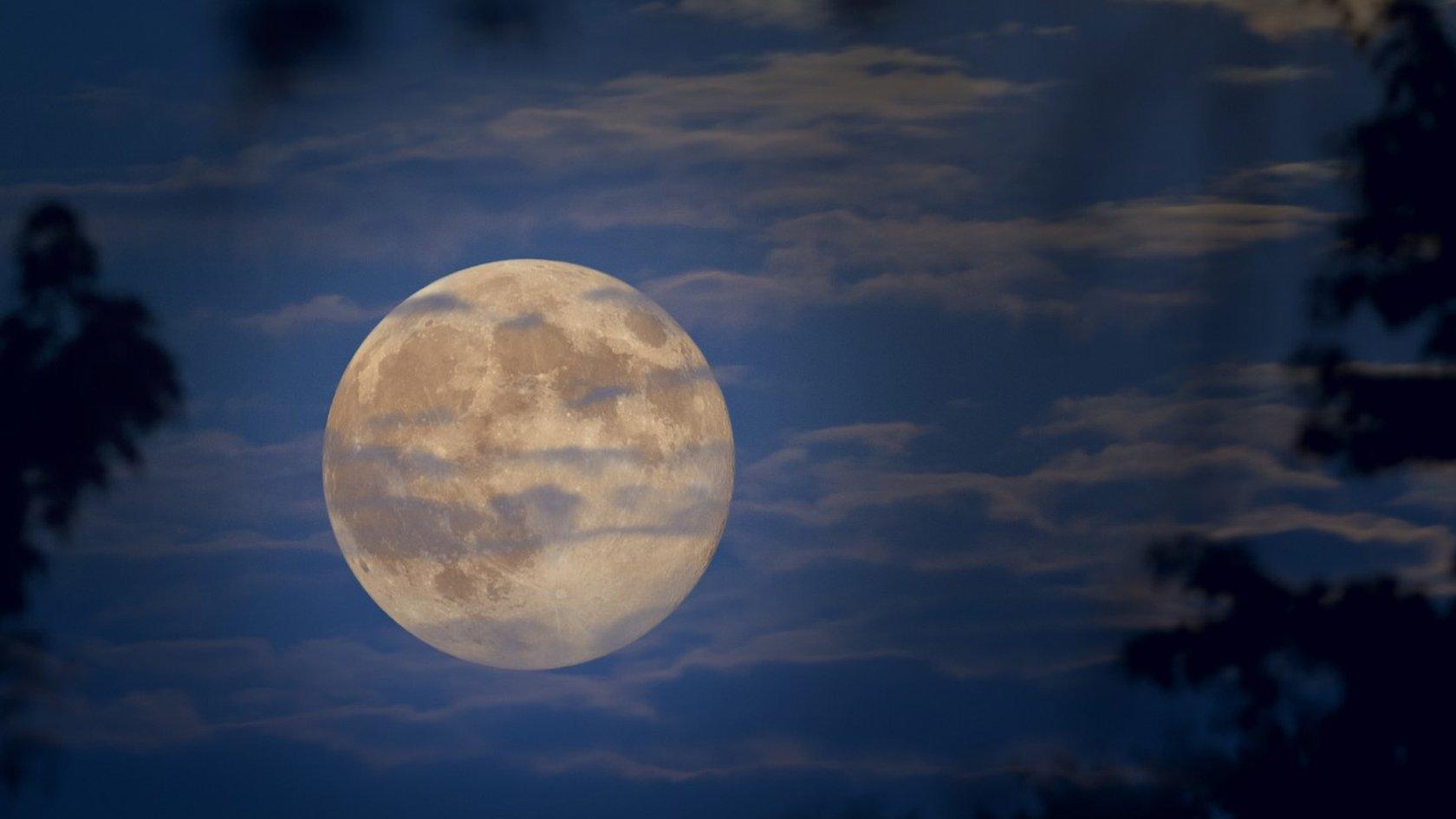
- Published25 July 2018
